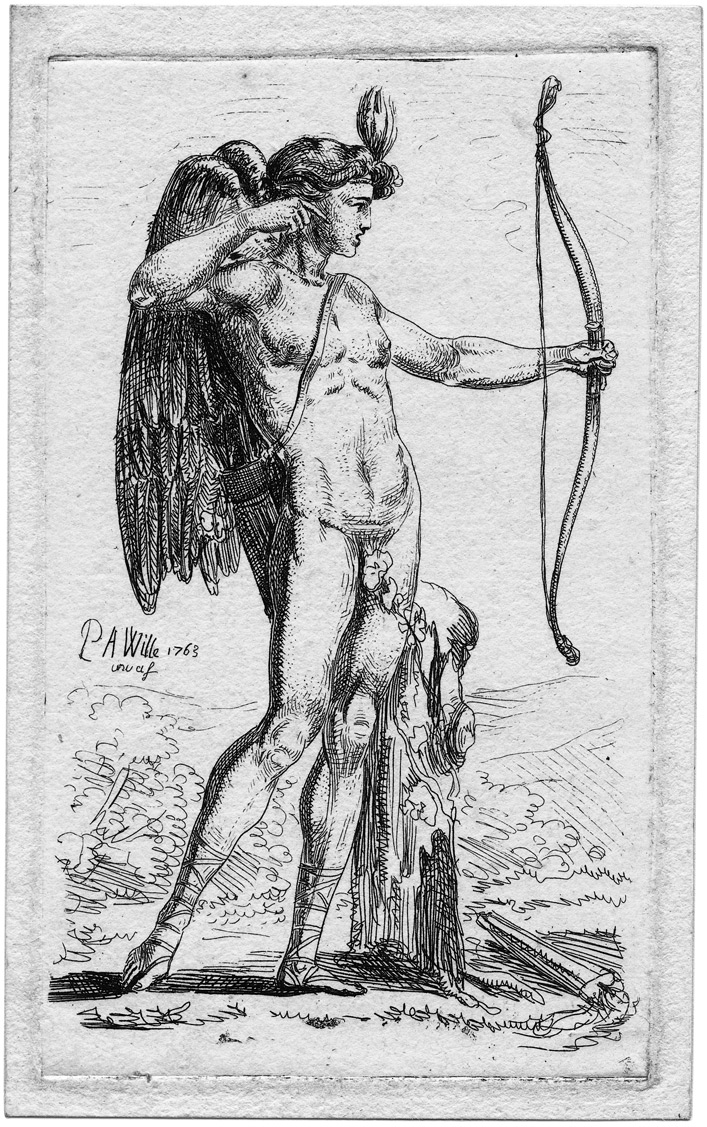Loading the page ...
Pierre Alexandre Wille
(1748–1821, Paris)
Apollo Shooting an Arrow from his Bow. Etching. 13.6 x 8.2 cm. 1763. Nagler 7.
This pretty little etching is of great rarity. It is missing from the reference works of Le Blanc and Heller-Andresen, and even Nagler points out the rarity of autograph etchings by the younger Wille. Pierre Alexandre was the son of the well-known and influential court engraver and draughtsman Johann Georg Wille
(1715 near Giessen – 1808 Paris), who had been engaged in very fruitful and productive work in Paris since 1736. The son was given sound graphic training by his father and learned painting from such renowned artists as Jean-Baptiste Greuze and Joseph Marie Vien before finally deciding to specialize in anecdotal genre painting in the style of the Dutch fine painters of the 17th century and of his tutor Greuze. Several of his works were duplicated by his father and the latter’s pupils as reproductive engravings. Louis XVI appointed Wille fils court painter, but after the Revolution and during the Napoleonic period the artist increasingly fell into oblivion.
The present etching – probably one of the young artist’s first works – dates to the year he was admitted to the Vien studio and is executed in a graceful, Classicist style unmistakably derived from the example of his tutor. Against a sketchily indicated landscape background we see Apollo, who was not only the god of light, healing, music and the arts, but also the patron of archers. The lissom youth, the embodiment of young manly beauty, has just discharged an arrow and is looking critically to see if he has hit his target. His slender, almost feminine figure and the dancerlike elegance of his pose are largely influenced by Vien’s painting. The portrayal is executed in a light, agile and delicate etching technique, which lends the scene a happy, carefree note.
A very fine, harmonious impression with margins. Minor ageing, otherwise excellently preserved. From the Johann Nepomuk Seiler Collection (1793 Munich – 1876 Kempten, not in Lugt).
Contact us for further information